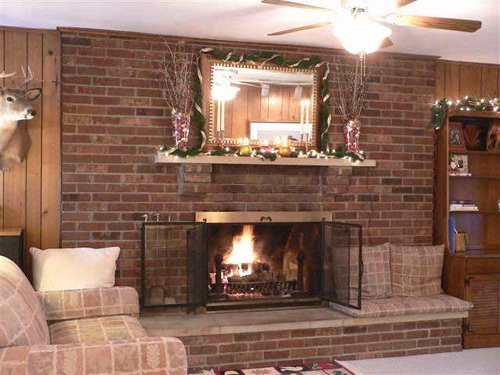A fireplace that serves a working chimney is the most obvious part of an intricate burning framework that provisions warmth and excellence to the hearth. A well-fabricated smokestack draws well, rapidly venting the smoke and gases made by the best electric fireplace. Following quite a while of utilization, in any case, stacks are helpless to crumbling that may deny them of their capacity, as well as make them unsafe to utilize. Deferred upkeep generally implies expensive repairs.

Numerous old block and tile hearths are laid specifically finished wood sub ground surface or encircling, conveying ignitable material perilously near the firebox. Have it reviewed; a noncombustible, fortified solid section can be poured set up finished new surrounding, if necessary.
Clay
Unlined fireplace vents aren’t sheltered, regardless of how new they are. Since vents in more established houses are liable to undetectable splits, checks, and other harm that can prompt flames, it’s basic to introduce a liner if the chimney is utilized much of the time. There are three sorts of liner: mud, metal, and cast in place.
Metal
An adaptable or inflexible stainless steel liner unit introduced by a smokestack expert is the answer for most existing wood-or gas-consuming stacks. Aluminum is a more affordable option for a lower-warm gas-consuming chimney. Incorporate high-temperature protection as a major aspect of the installation.
Cast in Place
Appropriate for all fills, these lightweight concrete like frameworks line the fireplace with a smooth, consistent, protected way of high-temperature mortar. More costly to introduce than a metal liner, this write relies on mortar to fill in voids and seal them. A side advantage: The stone work liner has a tendency to reinforce the chimney.
Chimney Top
Absent or split block and disintegrating mortar are indications of harm from caught dampness, normal in old fireplaces with lime mortar. On the off chance that the piece of the smokestack that goes through upper room space is weakening, it might mean the storage room is ineffectively ventilated. Flowering—salty white stores, regularly close to the highest point of the smokestack—is a notice that the blocks are engrossing moisture.
Inspection
Analyze the outside fireplace for splits, missing mortar, and settling around the establishment. In the event that you see confirmation of disintegration or dampness, contact a brick work proficient for an exhaustive review.
Search for free or deficient blazing around the edge of the smokestack at the roofline. On the off chance that it’s harmed or missing out and out, put in new blazing that is set into the mortar joints no less than 1½” profound.
From the cellar or slither space, check whether the hearth and its anticipating cook’s garment lay on a workmanship or stone establishment. On the off chance that the hearth is upheld by wood confining or a wood subfloor, you’ll require another fortified solid help before the chimney is sheltered to utilize.
Verify that the firebox is fixed with hard-headed (or fire) block and fireplace mortar. A stack breadth can let you know whether the chimney meets this standard. A steel or cast-press firebox contorted by presentation to warmth ought to be supplanted.
